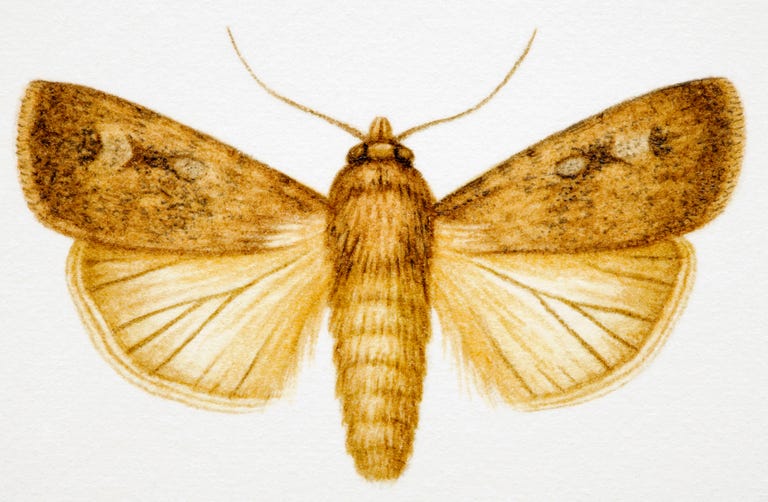Moths Can Use the Earth’s Magnetic Field to Navigate
These plain brown moths can complete long distance migrations by moonlight, using the magnetic field like a compass.
By Laura Yan
Getty Images
Every spring, billions of dusty looking bogong moths travel hundreds of miles across Australia to a place they have never been. They migrate to escape the oncoming heat, and to hibernate in layers inside caves. How do they navigate this journey, which can take days to weeks each way? Scientists previously imagined that they might use the stars for help. (For instance, dung beetle uses polarized light, the moon or the Milky Way for the far less glamorous task of rolling a ball of excrement along a perfectly straight line for a few minutes at a time). But the most recent research, published in Current Biology, suggest that the moths navigate using magnetic fields instead.
Their research is the first reliable evidence that insects can navigate using magnetic fields (nocturnal songbirds and sea turtles do, too). Aside from bogong moths, the only other insects that can accomplish such a long, directed migration are monarch butterflies. While monarch butterflies flies using the reliable direction of the rising and setting sun, moths fly at night by the shifting moonlight.
To test their theory, researchers captured bogong moths during their migration. The moths were tethered to a metal rod in the center of a plastic drum, and exposed to a moving cutout of a mountain and a synthesized magnetic field the same strength as the one on Earth. Researchers recorded what direction they roared in response to the magnetic movement. Scientists believe that the moths combine visual cues and magnetic signals to find their way, as a hiker might use a compass and reference points like trees and peaks as they come into view.
But another big mystery still remains. How do moths, coming from different directions, know to head to these caves in the first place? To test it, researchers will see how moths react to projections of the Milky Way, and even how genetics could gift young moths a preprinted map of their migration route.
(via The New York Times)
No comments:
Post a Comment